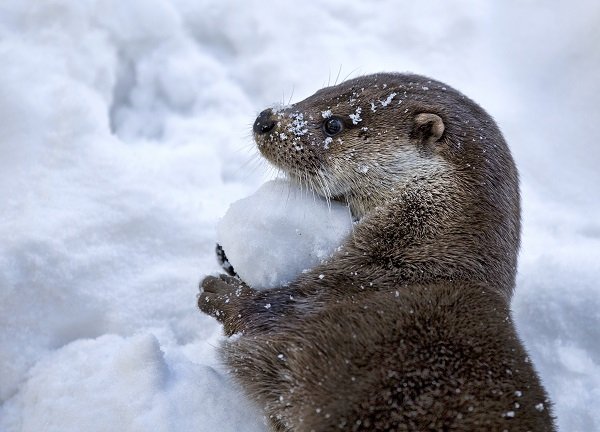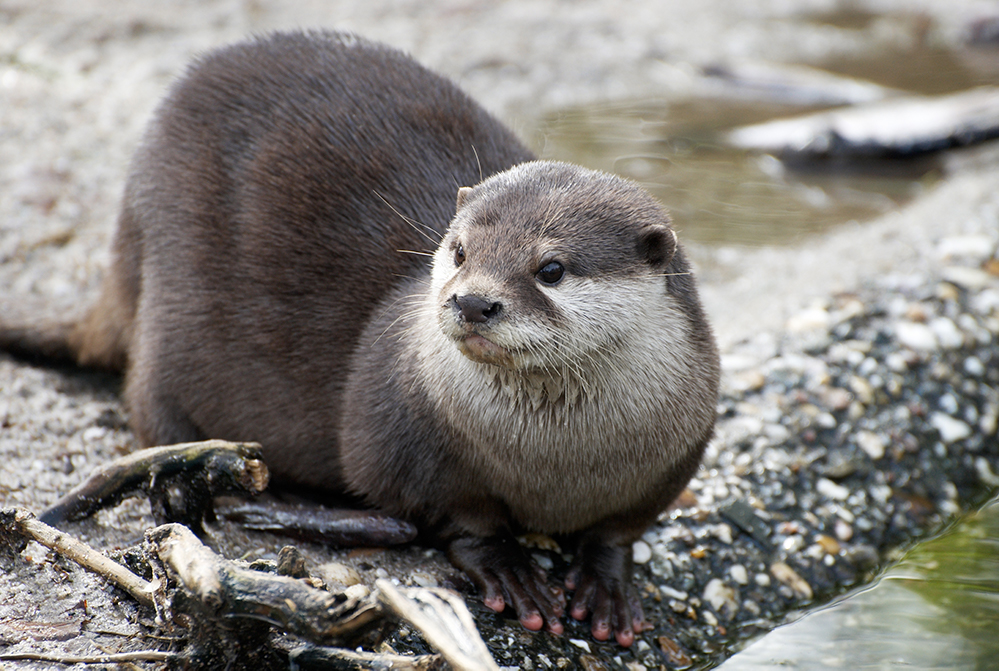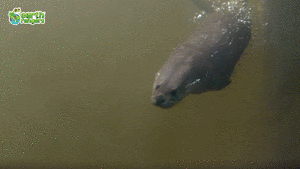River otters are adorable members of the weasel family. With a sleek body and tail, short legs, webbed feet and waterproof fur, it’s made for life in the water. The river otter lives across Canada in small groups, and although its name suggests it spends all its time in rivers, it often comes onto land to find shelter, rest, and travel between different waterways. This can be a big challenge, especially in the winter, when the river otter must keep its exposure to cold and predators to a minimum.

It’s really important that we learn about these special creatures so we can help to keep their habitats safe and protected. That’s why Earth Rangers has been working with Wildlife Conservation Society (WCS) Canada to learn more about the open water and areas along Yukon’s shorelines that otters use to get from one waterway to another. In fact, if you adopted a river otter through the Earth Rangers app, you’ve helped to support WCS Canada. Read on and find out more about their important work!
The Project
WCS Canada investigated the size of the river otter population in
an area in southern Yukon during the winter in 2019-2020. Before they did any
river otter investigating, however, the researchers had some other work to do.
Led by Dr. Don Reid, researchers first divided up the shorelines they were going to visit into 500-metre-long segments. Then they looked at whether the water near each segment was likely to be open water (without ice on top). Areas with open water in winter are preferred by river otters, because it’s easy for them to get in and out of the waterway. The researchers divided up the shorelines into three categories: high likelihood of use (river otters would probably live there), low likelihood of use (river otters probably wouldn’t live there) and no use (river otters weren’t expected to be there at all).
The Investigation
How would the team figure out if river otters were living in an
area? (River otters don’t have addresses, after all). Simple: just look for
tracks! By looking for snow tracks near the shoreline, researchers could see
where the otters came onto the land, and where they re-entered the water.
Over the course of ten days in December, Dr. Reid and the researchers got busy. First, they visited 36 randomly chosen locations where river otters were highly likely to be found. They found otters living in 11 of the areas, and a total of 27 individual river otters were accounted for. Some otters were alone, but a group of six otters was found in one segment.

In March, the team visited different shoreline segments in the Yukon. They found the most river otters in the high likelihood areas (in 34 segments of shoreline, they found ten with otters in them, for a total of 24 river otters). They found some otters in the low likelihood areas (in 63 segments, they found river otters in five, with seven otters accounted for). And in the areas they didn’t expect to find river otters, well, they didn’t. Out of ten segments, none had evidence of river otters.
The Results
So what does this all mean? Well, the researchers discovered that
it’s really, really important that otters have access to open water all
year round, especially in winter. And an area is even more attractive to otters
if the open water drains in to a lake.

With this information, scientists can advise the Yukon government to map and identify these river otter habitats as Key Wildlife Areas. This will help to protect them from development and human interference. And THAT, Earth Rangers, is a huge win for the river otter!
How YOU Can Get Involved
Earth Rangers, if you love river otters as much as we do, you can help out by adopting a river otter of your very own. Log onto the Earth Rangers app and you’ll be able to add a sweet little otter to your family and help us continue to preserve the habitats of real-life river otters!

In collaboration with:


Save the river otters living free and in the wild
I will definately be able to get the latest Flash player is required for video playback is unavailable right now because this video is not available for remote playback is unavailable right now because this video. Ph
So cute cute
Help save the river otters
I love the otters they are so cute. I really liked that video seeing how they swim
I LOVE them
What an amazing experiment! Very interesting!
That sounds interesting do you think there could be a whole lot out there?
OMG THEY ARE THE CUTEST
I love